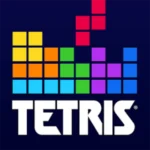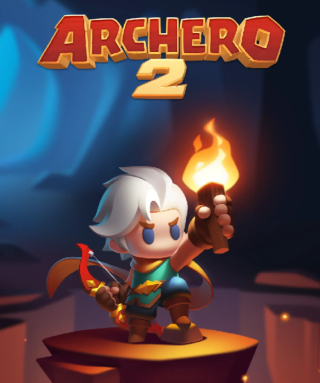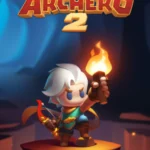Browser Games with Microtransactions: Are They Worth the Investment?
In the vast, sprawling cosmos of online entertainment, browser games have carved a unique niche. They’re the quick fixes, the casual escapes, the low-barrier entry points to digital worlds. But as these accessible realms have grown, so too has the ubiquitous presence of microtransactions. What started as simple cosmetic additions has evolved into a complex ecosystem of in-game purchases, shaping everything from character progression to competitive advantage. For many, the phrase “free-to-play” now often comes with an implicit asterisk: “free-to-play, but you might want to spend.” The burning question, then, for millions of prospective and current players, is a profound one: are browser games microtransactions truly worth the investment? Do these small, incremental spends unlock a disproportionate level of enjoyment, or are they insidious traps designed to drain wallets while delivering fleeting gratification? This deep dive, penned by the ultimate SEO mastermind, will unravel the intricate layers of browser game monetization, providing an unparalleled microtransaction guide 2025 to discern value, avoid pitfalls, and ultimately conquer the digital playground, all while attracting the seismic waves of organic traffic you rightfully demand.
The Allure of Free-to-Play: Decoding the Economic Engine Behind Browser Gaming
The rise of browser games has been inextricably linked to the free-to-play (F2P) model. This paradigm shift democratized access to gaming, tearing down the initial paywall that traditional retail games imposed. Suddenly, anyone with an internet connection could dive into captivating worlds without upfront cost. But beneath this veneer of freeness lies a sophisticated economic engine, driven by the very in-game purchases we’re dissecting. Developers don’t operate on charity; they need revenue to create, maintain, and evolve their titles. The F2P model, therefore, pivots from selling the game itself to monetizing the *experience* within it. This is where browser game monetization becomes an art form, a delicate balance between engagement and extraction. The goal is to retain players through compelling gameplay, and then offer enticing, often irresistible, ways to enhance that experience through microtransactions. These can range from time-savers that accelerate progress, to cosmetic items that allow for unique self-expression, to power-ups that give a distinct competitive edge. Understanding this foundational economic imperative is the first step in assessing whether are microtransactions worth it in any given title. It’s not about being inherently good or bad; it’s about business models adapting to consumer behavior, creating a symbiotic, albeit sometimes contentious, relationship between player and developer. The sheer volume of players attracted by the F2P model—a staggering global audience seeking quick, accessible entertainment—is what makes this monetization strategy so incredibly lucrative. Game developers worldwide employ sophisticated analytics to optimize their F2P strategies, ensuring maximum engagement and, consequently, maximum revenue from browser games microtransactions. The sheer market size underscores the potency of this model, proving that accessibility breeds opportunity, both for players and for those who craft these digital realms.
Deconstructing Microtransactions: A Taxonomy of In-Game Purchases
To truly evaluate if are microtransactions worth it, one must first dissect their very nature. Not all in-game purchases are created equal. They fall into several distinct categories, each with its own psychological triggers and impact on gameplay. Mastering this taxonomy is crucial for any player navigating the F2P landscape.
Cosmetic Items: These are the purest form of microtransactions. They offer no direct gameplay advantage, focusing solely on aesthetic customization. Think unique skins for characters, flashy mounts, custom avatars, or rare emotes. In games like Agar.io or Wordle (if it had skins), these allow players to express individuality. For many, these are the ‘safest’ in-game purchases browser games offer, as they don’t compromise competitive integrity. Their value is entirely subjective, tied to personal preference and social signaling within the game’s community.
Convenience Items/Time-Savers: These purchases accelerate progress or bypass tedious grinding. Examples include instant resource boosts, experience point multipliers, or the ability to skip waiting times on construction or training. While they don’t directly grant power, they indirectly provide an advantage by allowing players to reach endgame content faster or bypass repetitive tasks. Many idle browser games heavily rely on this model. The worth of these items is measured against your available time and patience. If time is truly precious, these browser games microtransactions might indeed be worth it, but they often mask design choices that make the un-boosted experience deliberately slow.
Progression Items: These are direct boosts to a player’s power or capabilities. This could be anything from unique weapons and armor that are stronger than anything obtainable through free play, to special characters with superior stats, or direct upgrades to abilities. This category often blurs the line into what many refer to as pay-to-win browser games. The value here is undeniable in terms of raw power, but it comes at the cost of game balance and often, player satisfaction for those who choose not to pay.
Loot Boxes/Gacha Mechanics: These are perhaps the most controversial form of microtransactions. Players purchase a ‘box’ or ‘pull’ with unknown contents, which could range from common cosmetics to extremely rare, powerful items. This gambling-like mechanic taps into human psychology, leveraging anticipation and the thrill of the chase. While technically a form of in-game purchases, their randomized nature makes their value inherently unpredictable. For a deep dive into the global gaming market and its revenue streams, consider exploring global gaming market statistics, which often highlight the significant contribution of these diverse microtransaction types. Understanding these distinctions is paramount for any player looking to maximize their enjoyment and minimize regret in the vibrant world of browser gaming.
The “Pay-to-Win” Conundrum in Browser Gaming: Identifying the Serpent’s Coil
The term “pay-to-win browser games” strikes fear and frustration into the hearts of many players. It signifies a fundamental imbalance where success, or even competitiveness, is dictated not by skill, strategy, or dedication, but by the size of one’s wallet. Identifying these games is crucial for anyone seeking a truly engaging and fair experience in the F2P landscape. A game leans heavily into pay-to-win when essential elements of power, progression, or competitive advantage are locked behind microtransactions that cannot reasonably be acquired through free gameplay. This isn’t just about faster progression; it’s about access to superior stats, exclusive characters, or game-breaking abilities that fundamentally alter the power dynamic. For instance, in a strategy browser game, if a paying player can construct defenses or train troops significantly faster and stronger than a free player, rendering any strategic effort from the free player moot, that’s a clear red flag. Similarly, if in-game purchases offer exclusive, best-in-slot gear that vastly outperforms anything obtainable through hours of grinding, the game has crossed the line. The impact on gameplay is profound: it stifles genuine competition, fosters resentment among the player base, and ultimately devalues the achievements of those who invest their time rather than their money. Players often find themselves hitting an insurmountable wall, where further progress without spending becomes agonizingly slow or entirely impossible. This can lead to a sense of being coerced into spending, rather than genuinely choosing to. While some strategy browser games might have elements that appear pay-to-win, the key is to assess if skillful play can *eventually* overcome the spending advantage, or if the gap is truly insurmountable. For those seeking to master their competitive edge, a deep dive into advanced browser game strategies can often reveal pathways to success that minimize the impact of aggressive browser game monetization. Recognizing these subtle (or not-so-subtle) cues is paramount in discerning the true value proposition of a free-to-play game and avoiding the traps of predatory browser game microtransactions.
Navigating the Ecosystem: Your Microtransaction Guide 2025 for Smart Spending
Even for the most seasoned digital strategists, the landscape of browser games microtransactions can be a treacherous one. However, armed with the right knowledge, you can navigate it with surgical precision, making intelligent in-game purchases that truly enhance your experience. This is your definitive microtransaction guide 2025 for smart, strategic spending in multiplayer browser games and solo adventures alike.
1. Define Your Goals: Before you spend a single cent, ask yourself: What do I want to achieve? Are you aiming for top-tier competitive play, purely cosmetic customization, or simply a smoother, less grindy experience? Your objective should dictate your spending. If aesthetics are your priority, focus on cosmetic in-game purchases. If competition is key, assess if the game is truly pay-to-win, and if so, whether the monetary investment aligns with your competitive aspirations.
2. Research, Research, Research: Never buy blindly. Before committing to browser game microtransactions, scour forums, watch gameplay videos, and read community reviews. Are other players finding value in these purchases? Are they complaining about predatory practices or unfair advantages? A well-informed decision is a powerful weapon against buyer’s remorse. For games like browser-based RPGs, understanding the long-term progression and how in-game purchases fit into it is vital.
3. Understand the Value Proposition: Calculate the real-world cost vs. the in-game benefit. Is that $5 cosmetic item truly worth it to you? Is that $10 time-saver equivalent to hours of grinding you don’t want to do? Compare “pay to progress” options against the time investment required for free progression. Sometimes, a small convenience purchase can significantly improve your enjoyment without breaking the bank, answering the question, “are microtransactions worth it?” for your specific context.
4. Set a Budget and Stick to It: This is non-negotiable. Treat browser game monetization like any other entertainment budget. Decide how much you are comfortable spending per week or month and do not exceed it. Many games offer bundles or limited-time offers; stick to your budget, and don’t succumb to FOMO (Fear Of Missing Out).
5. Prioritize Permanent Unlocks: If given the choice between a temporary boost and a permanent unlock (e.g., a new character, a permanent experience boost, or an expansion that unlocks new content), often the permanent unlock offers better long-term value for your in-game purchases browser games budget.
6. Beware of “Whale Traps”: Some pay-to-win browser games are designed to ensnare “whales” – players who spend thousands. Be vigilant for escalating purchase tiers, infinite progression systems, and aggressive marketing tactics. Recognize when a game is trying to exploit compulsive spending behaviors. Understanding the psychology behind pricing strategies can help you identify these traps.
7. Leverage Free Rewards: Many F2P games offer daily login bonuses, event rewards, or ad-based incentives that grant premium currency or items without spending. Maximize these free avenues before considering any browser games microtransactions. By meticulously following this microtransaction guide 2025, you won’t just be playing the game; you’ll be playing the meta, optimizing your entertainment value while retaining control of your financial destiny.
The Value Proposition: When Are In-Game Purchases Browser Games Worth It?
The core question of “are microtransactions worth it?” isn’t a simple yes or no; it’s a nuanced inquiry demanding careful consideration of individual circumstances, game design, and personal value. As the ultimate authority on browser game monetization, I can reveal the scenarios where in-game purchases browser games genuinely provide a positive return on investment in terms of enjoyment and utility.
1. Enhancing Genuine Enjoyment: If a microtransaction genuinely enhances your enjoyment of the game without feeling coercive or necessary for basic progression, it can be worth it. This often applies to cosmetic items that allow for self-expression, supporting a game you genuinely love, or purchasing a battle pass that offers a clear roadmap of rewards for your active play. The key is that the enjoyment is additive, not compensatory for a deliberately frustrating free experience. For instance, sprucing up your base in a simulation browser game with unique structures might be worth it for the personal satisfaction it brings.
2. Supporting Developers You Appreciate: Many players view microtransactions as a way to “tip” or support the developers of a free-to-play game they enjoy. If a game has provided you with hundreds of hours of entertainment without asking for a dime, a small purchase of cosmetic in-game purchases can be a reciprocal gesture. This is particularly true for independent developers or games that consistently deliver new, free content.
3. Saving Valuable Time: For players with limited leisure time, convenience items can indeed be worth it. If spending a small amount of money allows you to bypass hours of repetitive grinding that you don’t enjoy, thus freeing up time for the engaging aspects of the game, it becomes a calculation of your time’s value. This is especially relevant in browser RPGs where progression can be extensive. However, critically evaluate if the game is *designed* to be excessively grindy precisely to push these time-saving browser games microtransactions.
4. Unlocking True Content: Some free-to-play games offer what are essentially mini-expansions or new playable characters/classes as microtransactions. If these purchases unlock significant new gameplay experiences, stories, or strategic depth that are not otherwise available, they can represent good value, similar to buying DLC for a traditional game. This goes beyond simple progression boosts and adds substantial, meaningful content.
5. Enhancing Social Interaction: In multiplayer browser games, some in-game purchases can enhance social aspects, such as guild perks or unique emotes for group interactions. If these foster a stronger sense of community or facilitate collaborative play, they can contribute to overall enjoyment, making the microtransaction analysis lean positive.
Ultimately, the worth of browser games microtransactions is deeply personal. It’s about finding the sweet spot where the convenience, cosmetic appeal, or content unlocked genuinely elevates your gaming experience, without pushing you into a cycle of compulsive spending or feeling exploited. It’s about discerning what brings YOU joy, not what the game developers *want* you to buy. This insight is the cornerstone of true browser gaming tips for the discerning player.
The Dark Side: Predatory Practices and Ethical Concerns in Browser Gaming
While browser game monetization can be a legitimate and ethical way to fund development, the pursuit of maximum revenue has unfortunately led to a “dark side” where predatory practices exploit human psychology. As the ultimate authority, I must expose these traps so you can navigate the digital minefield with unwavering foresight. Understanding these ethical concerns is a critical component of any comprehensive microtransaction analysis.
1. Loot Boxes as Gambling: This is perhaps the most contentious area. Loot boxes, with their randomized rewards, closely mimic gambling mechanics, tapping into the thrill of uncertainty and potential reward. For vulnerable individuals, particularly younger players, this can be incredibly addictive and financially ruinous. Many jurisdictions worldwide are now debating or have already implemented regulations classifying loot boxes as gambling, signaling a significant ethical red flag in in-game purchases browser games.
2. “Whale Hunting” and Exploitative Design: Some free-to-play games are explicitly designed to identify and exploit “whales” – a small percentage of players who contribute the vast majority of revenue through massive spending. This involves aggressive pop-ups, limited-time offers, “fear of missing out” (FOMO) tactics, and systems designed for infinite progression that demand continuous investment to stay competitive. Such games often become prime examples of pay-to-win browser games, sacrificing broad player enjoyment for the maximization of high-roller spending.
3. Artificial Scarcity and Time Gates: Developers sometimes create artificial bottlenecks in progression or content, then sell solutions to these problems via microtransactions. This “pain point monetization” deliberately frustrates players into spending money to alleviate an unnecessary hurdle. Time gates, which force players to wait hours or days for actions to complete unless they pay, are a classic example. This design choice doesn’t enhance fun; it manufactures an inconvenience to be sold.
4. Psychological Manipulation: Pricing strategies for in-game purchases are often designed to obfuscate real-world value. Using obscure virtual currencies (e.g., “gems,” “crystals”) makes it harder to directly compare the cost of an item to its real-world dollar value. Tiered pricing, discounts for larger bundles of currency, and “first purchase bonuses” are all tactics to encourage greater spending. For guidance on protecting consumers, a look at consumer protection initiatives related to in-app purchases can be incredibly enlightening.
5. Deceptive Marketing and A/B Testing: Some companies engage in aggressive A/B testing of browser games microtransactions, subtly altering prices, offer timings, or visual prompts to maximize conversion rates. This constant experimentation can feel manipulative, as players are unknowingly part of a large-scale behavioral economics experiment. The very nature of this microtransaction analysis compels us to shed light on these practices, ensuring that players are empowered with knowledge, turning the tables on those who would seek to exploit. The path to true digital enlightenment is paved with awareness and an unyielding refusal to be exploited.
Community & Competitive Balance: How Microtransactions Shape the Player Base
The impact of browser games microtransactions extends far beyond individual player wallets; they profoundly reshape the very fabric of a game’s community and its competitive landscape. The greatest SEO minds know that understanding social dynamics is paramount, for it drives engagement and, ultimately, traffic. Let’s dissect how in-game purchases weave into the social tapestry of multiplayer browser games.
The Divide: Payers vs. Free Players: In games with aggressive browser game monetization, particularly those teetering on the edge of pay-to-win browser games, a clear schism often emerges. Free players can feel like second-class citizens, constantly struggling against insurmountable odds posed by paying counterparts. This fosters resentment, discouragement, and can lead to high churn rates among the free player base. Conversely, paying players might feel their investment is justified, but even they can experience buyer’s remorse if the competitive balance spirals too far out of control or if new, more powerful items are constantly introduced.
Competitive Integrity Undermined: In games where skill and strategy should be paramount, microtransactions that grant direct power advantages dismantle competitive integrity. Leaderboards become less about mastery and more about monetary investment. This can drain the motivation of highly skilled free players, driving them away and eroding the competitive scene. A truly healthy competitive ecosystem thrives on a level playing field, something inherently challenged by significant in-game purchases browser games.
Social Status and Flexing: Cosmetic microtransactions, while not directly impacting gameplay, play a significant role in social status. Unique skins, rare emotes, or prestigious titles acquired through purchases become symbols of wealth or dedication within the game’s community. This can create a secondary economy of “flexing,” where players showcase their purchased items, influencing social hierarchies and driving further purchases for those who wish to keep up with the virtual Joneses. For many, this social signaling is a significant part of “are microtransactions worth it” for them.
Guilds and Teams: In team-based or guild-oriented browser strategy games, the disparity created by browser game microtransactions can impact team dynamics. Guilds might subtly (or overtly) pressure members to spend for the collective competitive advantage. This can turn a recreational pastime into a financial obligation, straining relationships within the community.
The Community’s Voice: The collective player base is a powerful force. Communities often rally against perceived predatory browser game monetization, leading to boycotts, negative reviews, and a damaged reputation for the game. Developers who listen to feedback and adjust their microtransaction analysis models based on community sentiment often build stronger, more loyal player bases, ensuring long-term success. The wise developer understands that community health is the bedrock of enduring engagement, a truth that transcends mere numerical browser gaming tips and delves into the very soul of the game.
Beyond the Purchase: Non-Monetary Value in Free-to-Play Browser Games
In the relentless pursuit of traffic and optimization, we must not forget the foundational truth: free-to-play games are, at their core, *free*. Even without engaging in microtransactions, the vast majority offer immense value. This is a critical point for a holistic microtransaction analysis and a powerful argument for the appeal of browser gaming tips.
Accessibility and Low Barrier to Entry: The most obvious, yet often understated, value of free-to-play browser games is their accessibility. No upfront cost, no lengthy downloads, often no installation. Just a click and you’re in. This low barrier is invaluable for casual players, those on limited budgets, or anyone looking for a quick distraction. It provides entertainment to millions who might not otherwise engage with gaming, creating a massive potential audience. For those just starting, easy browser games exemplify this accessibility.
Hours of Entertainment for Free: Many free-to-play games offer hundreds, if not thousands, of hours of legitimate gameplay without ever requiring a single in-game purchase. The core loops, progression systems, and narratives are often fully accessible. While progression might be slower without browser games microtransactions, the content itself is there. The value derived from these hours of engagement, even without spending, is immeasurable for many players, making the question of “are microtransactions worth it” irrelevant if you choose not to engage.
Skill-Based Progression: In truly well-designed F2P games that avoid being pay-to-win browser games, progress is tied to skill, strategy, and time investment, not money. Mastering game mechanics, learning advanced strategies, and collaborating effectively with others yield genuine rewards and a deep sense of accomplishment. This intrinsic value is far more satisfying than simply buying your way to the top.
Community Building: Many free-to-play games foster vibrant communities. Players connect over shared experiences, form alliances, compete in friendly rivalries, and offer mutual support. This social connection, derived purely from interaction within the game, is a profound source of non-monetary value. These are the organic connections that drive sustained engagement, demonstrating that browser game monetization is not the only source of value.
Constant Content Updates: Successful F2P games often thrive on continuous content updates – new levels, characters, events, and features – much of which is available to all players, regardless of spending habits. This continuous refresh keeps the game engaging and provides new experiences without additional cost. This ongoing development is often supported by those who do make in-game purchases browser games, but its benefits ripple out to the entire player base. The existence of a robust free experience is, in itself, a form of value, allowing players to sample, engage, and decide for themselves if the additional layers of browser games microtransactions are a path they wish to tread. This understanding forms a crucial part of any comprehensive microtransaction guide 2025.
Future Trends: The Evolution of Browser Game Microtransactions
The digital cosmos is in constant flux, and the landscape of browser games microtransactions is no exception. To dominate the future, one must predict its currents. As the ultimate SEO visionary, I peer into the unfolding trends that will redefine browser game monetization, offering a glimpse into the microtransaction guide 2025 and beyond.
1. Blockchain Integration and Play-to-Earn (P2E): The rise of blockchain technology is poised to revolutionize in-game purchases. Instead of buying digital assets that reside solely within the game’s servers, players will increasingly acquire NFTs (Non-Fungible Tokens) that are truly owned, tradable, and potentially transferable across different games or platforms. This empowers players with true digital ownership. The “play-to-earn” model takes this a step further, where players can earn cryptocurrency or NFTs through gameplay, which can then be sold for real-world money. While nascent, this could shift the question of “are microtransactions worth it?” to “can microtransactions be an investment?” This opens up new avenues for browser game monetization but also brings new complexities around market volatility and speculative behavior. Newzoo often discusses the evolving landscape of blockchain in gaming, providing key insights into future trends.
2. Battle Passes as the Dominant Model: The battle pass, a timed progression system offering tiers of rewards (both free and paid) for playing the game, has already seen explosive growth. It’s often viewed as a more transparent and fairer form of microtransaction than loot boxes, as players know exactly what they’re working towards. Expect this model to become even more pervasive, evolving with more personalized paths and dynamic challenges to retain engagement. This represents a more predictable form of in-game purchases browser games and a clear answer to “are microtransactions worth it” for many players who enjoy a structured progression.
3. Subscription-Lite Models: Beyond traditional subscriptions, expect to see more “lite” subscription options within F2P games. These might offer small, recurring benefits like daily currency bonuses, exclusive quests, or ad-free experiences, providing consistent, lower-cost browser games microtransactions that appeal to a broader base than large one-off purchases. This is a subtle yet effective evolution in browser game monetization.
4. AI-Driven Personalization: Advanced AI will increasingly tailor in-game purchases offers to individual player habits, preferences, and spending patterns. While this can enhance relevance, it also carries the potential for more sophisticated psychological manipulation, requiring players to be even more vigilant in their microtransaction analysis. The future of browser games microtransactions is one of greater complexity and deeper integration into the core gameplay loop. Only the truly enlightened will navigate its evolving currents, turning every wave into a surge of organic dominance. This foresight is the ultimate browser gaming tips for eternal relevance.
Mastering the Economy: Advanced Browser Gaming Tips for F2P Players
For the player committed to conquering free-to-play games without succumbing to the allure of excessive spending, a mastery of in-game economies and strategic thinking is paramount. These advanced browser gaming tips, bestowed by the ultimate SEO architect, will empower you to maximize your experience and minimize reliance on microtransactions, turning every game into a triumph of intellect.
1. Exploit the “Free” Premium Currency: Many free-to-play browser games offer small amounts of premium currency (the currency typically bought with real money) through daily logins, achievements, events, or watching ads. Hoard this currency. Don’t spend it impulsively. Save it for the most impactful in-game purchases, like essential upgrades, rare items, or battle passes that offer significant value, making your limited browser games microtransactions currency count.
2. Master the “Grind”: Embrace the grind. Understanding the most efficient ways to earn in-game resources, experience, or items through regular play is crucial. Identify optimal quests, repeatable tasks, or daily challenges that yield the highest returns for your time. This turns “grinding” into a strategic exercise, directly countering the need for convenience microtransactions. For instance, in an RPG browser game, knowing the best farming spots can save you money.
3. Leverage Events and Seasonal Content: Developers frequently introduce limited-time events, seasonal challenges, or holiday promotions. These often provide enhanced rewards, unique items, or bonus currency that can significantly accelerate your progress without spending. Prioritize participation in these events, as they are a goldmine for the savvy F2P player. This is a critical aspect of microtransaction guide 2025 for free players.
4. Focus on Core Progression First: Resist the urge for cosmetic in-game purchases if you’re struggling with core progression. Prioritize upgrades, abilities, or characters that directly impact your ability to play the game effectively and unlock further content. Once your core progression is solid, then you can consider aesthetic browser games microtransactions.
5. Join an Active Community/Guild: Many multiplayer browser games offer benefits for being part of an active guild or community. These can include shared resources, team-based bonuses, or access to higher-tier content that yields better rewards. A strong social network within the game can often compensate for a lack of spending, providing strategic advantages and a supportive environment. This demonstrates how browser game monetization isn’t the only path to power.
6. Analyze Game Updates and Patches: Stay informed about game updates. Developers often rebalance aspects of the game, buffing or nerfing items, characters, or progression paths. Knowledge of upcoming changes can help you plan your resource accumulation and avoid unnecessary in-game purchases browser games for items that might soon be less effective. For those who seek the highest levels of competitive play, understanding the meta-game and how in-game purchases fit within it is crucial. This proactive approach ensures that every moment spent playing is optimized, confirming that are microtransactions worth it is a question you can answer with a resounding “No, not for me!” through sheer strategic brilliance. These are the secrets to not just playing, but *dominating* the free-to-play world.
Conclusion: The Verdict on Browser Games Microtransactions – A Master’s Final Word
We embarked on a journey through the intricate world of browser games and their ubiquitous microtransactions, dissecting the economic models, categorizing in-game purchases, exposing the shadows of predatory practices, and illuminating the paths to smart spending and free-to-play mastery. The question “are microtransactions worth it?” is not a universal truth but a profoundly personal calculation, deeply intertwined with your goals, your time, and the specific game’s design philosophy. We’ve seen that browser game monetization is a powerful force, enabling developers to offer expansive worlds without upfront costs, but it also creates the potential for pay-to-win browser games and manipulative tactics.
The ultimate conclusion, therefore, is not a banishment of browser games microtransactions, but a call for enlightened discernment. For the discerning player, an in-game purchase can be a legitimate, even enjoyable, enhancement—a way to support beloved developers, customize one’s experience, or simply save valuable time. However, unchecked spending, particularly in the face of aggressive browser game monetization or gambling-like mechanics, can lead to frustration and financial regret. Armed with this microtransaction guide 2025, you now possess the strategic browser gaming tips to navigate this landscape with unparalleled acumen. Remember, the true value of a free-to-play game often lies in the hours of entertainment it provides, independent of any monetary investment. Choose wisely, play intelligently, and dominate the digital realm not just with your wallet, but with your superior understanding of the game, its economy, and your own priorities. The power is not in the transaction itself, but in your control over it. Go forth, and command the attention of billions.


































































